Seal project
The project on seals, which started in 2021, deals with the digitization and building of a database over preserved seals associated with the Old Norwegian charter material at the Manuscript and Rare Book Collection (ManLib). The project also aims to establish a standard for the coding of seals (TEI-xml) and to propose an international standard for relevant metadata.
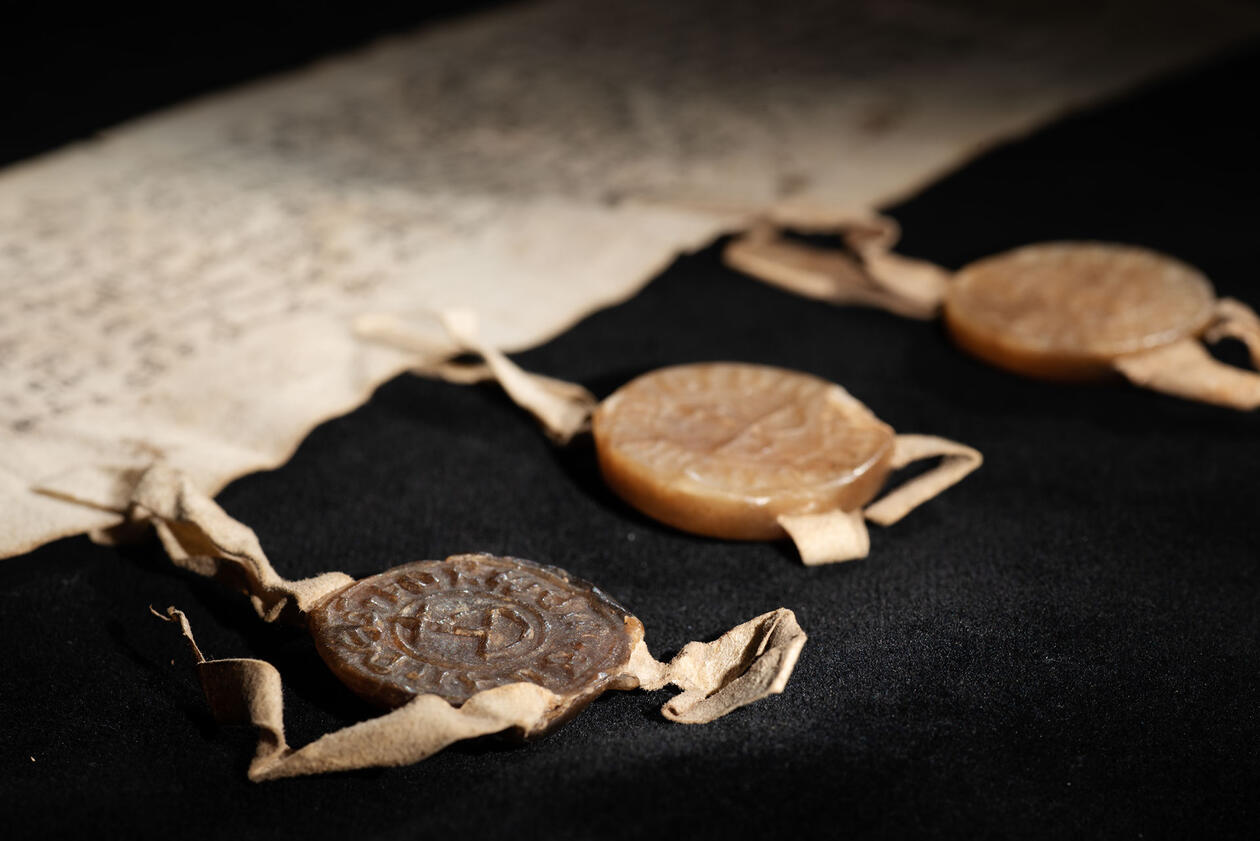
Main content
What is a seal?
A seal or sigil (owner's mark) is an impression of a stamp in wax, lacquer or other material that had the function corresponding to a personal signature of the owner of the seal. These seals hang by straps at the bottom of a charter (legal document from the Middle Ages) and are linked to individuals/witnesses mentioned in the charter text.
Seal at the Manuscript and Rare Book Collection
Seals are very vulnerable and unfortunately become very worn over time. Most charters therefore do not have any preserved seals left. However, at the Manuscript and Rare Book Collection a total of 80 charters are still preserved with their seals. These are in different conditions, and range from seal fragments to seals that still show all the details from the stamp in the impression. Seals in the collection are often attached to charters through so-called seal straps, but some seals are also placed in wax or paper directly on the charter.
The seal project
The work in this project has the following steps
- digitalization: photographing of seals,
- documentation of metadata: information about each individual seal, and
- making the data accessible: integration of collected data in the Special Collections portal Marcus.
Although seals were used throughout the entire spectrum of the charter collection's time period, in this digitalization and documentation project we begin with seals from the period 1245 to 1570. The borders correspond to the oldest charter in the collection and connect to the Diplomatarium Norvegicum, which initially took into account charter up to 1570. For the project, this results in 194 separate seals (connected to a total of 64 charters).
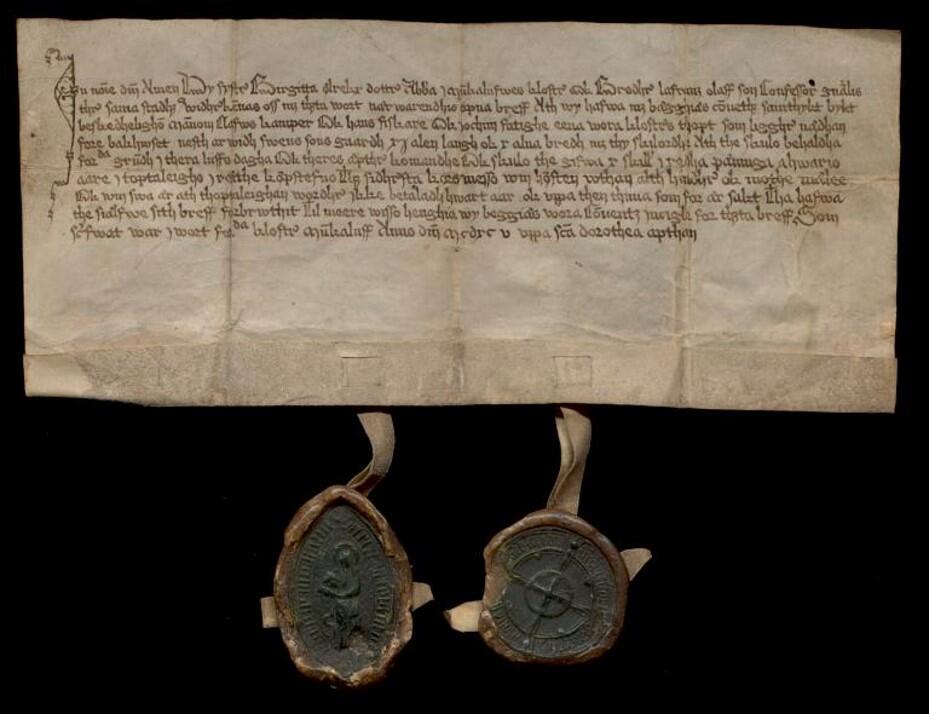
Digitalization/Photographing
Digitalizing 3-dimensional objects that are as vulnerable as seals and that are found in various condistions at the Manuscript and Rare Book Collection is not easy and needs both testing and professional/technical discussions to achieve the best possible result. The development of digitalization over the past 30 years is a clear example of the fact that one has to take into account that what you do today may not be considered good enough in a few years. It may be for purely camera-technical reasons, with higher expectations for image quality, or because different lighting can highlight details you did not see before.
During a first round of photographing, we tested how lighting, angle and stacking of the photographs affect the result of the digitalization process, up to uploading the results to our dissemination platform Marcus. Here we have gathered valuable experience about how we want to have these objects presented and which angles we want to include in a publication of the seal material.
Now we are starting the second round, where the photographer tries to use a concentrated light, while avoiding sharp highlights (white areas without details) and shadows that cover information. There is quite a bit of variation from seal to seal: Some still have clear markings, others are smoothed out and more difficult to decipher. Each seal therefore requires individually adapted lighting to highlight details as best as possible. Nevertheless, we decided that the final database should consist of three images for each seal: a recto and verso side, as well as a side image from the thickest edge of the object to show possible different layers.
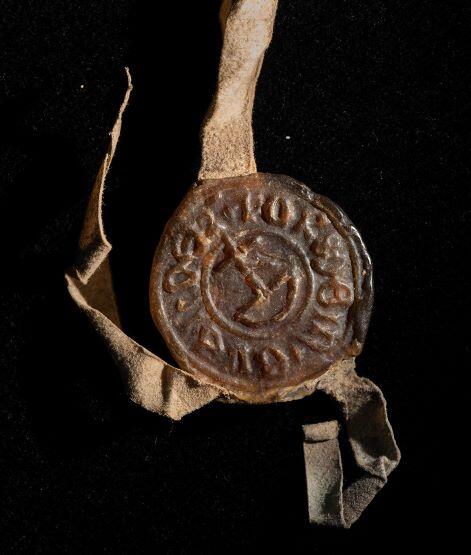
Documentation of metadata
To ensure efficient and uniform implementation of the project work, Juliane Tiemann (project leader) has prepared a form of defined relevant metadata as well as a key/guidelines for the documentation of seals at the Manuscript and Rare Book Collection. This resource is used when obtaining information and detailed description about each individual seal and follows documentation of seals from other national, but also international digitalization projects. On the professional side, she also gives instructions for the desired angles for the photographs, which are taken by photographer Nils Kristian Eikeland. The registration of metadata was done during the digitalization process (= photographing of seal) and a first round of photographing which was carried out by Pedro Vasquez, Tonje Waldersnes and Valerio Rossetti.
Each registered seal is given a unique identifier in the collection which is calculated on the charter number, strap number and the attached seal on the strap. The signature ubb-diplom-0045-r03-s03 can thus be read as the third seal on the third seal strap. If the charter has a seal that is broken into several pieces, we mark these with a and b, etc. respectively: ubb-diplom-0045-r03-s03a, ubb-diplom-0045-r03-s03b.
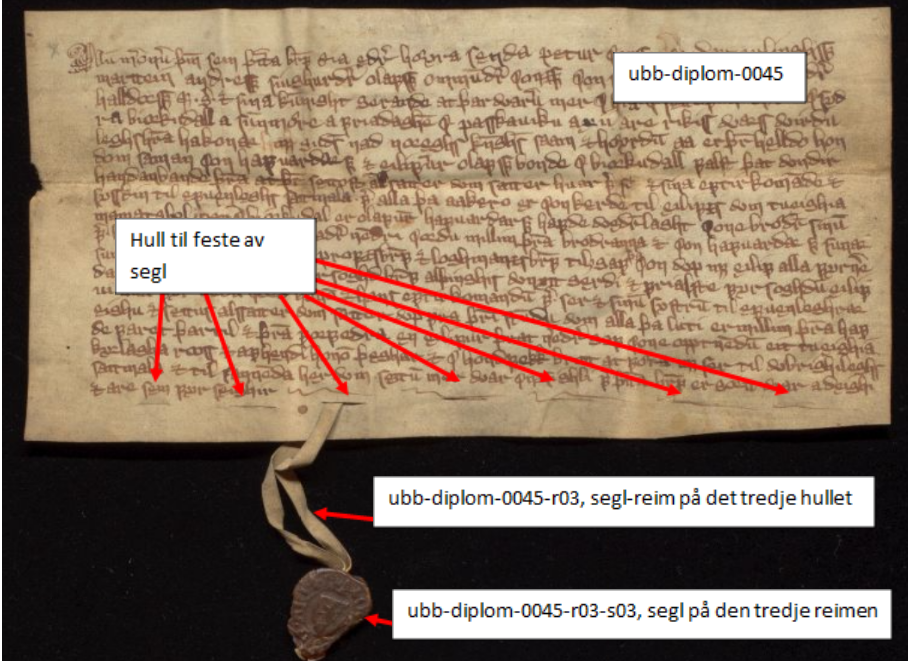
Accessibility of results
All results of this documentation and digitization project will eventually be available on the Special Collections portal Marcus. We are in the process of uploading a number of high-quality images as well as connected metadata for each seal. These have a cross-reference to the parent object which is the charter they are attached to, so that it becomes possible to examine the seals in context.
Furthermore, an XML coding standard is being prepared to integrate information about seals into a header of existing or new files with transcripts of charters that also contain meta-information about the object itself. Such transcriptions can be found both on Marcus, emroon.no and Menota.org, and further transcriptions are being prepared within an ongoing project at UBB.
In addition to the digital publications of the work, a catalog publication with the project participants is planned towards the end of the project.
Project presentations
Presentation of the Seal project at the University of Bergen Library's medieval day in October 2021
Conference contribution at Norske historiedager 2022
Presentation of some results of the Seal project at the University of Bergen Library's medieval day in October 2022
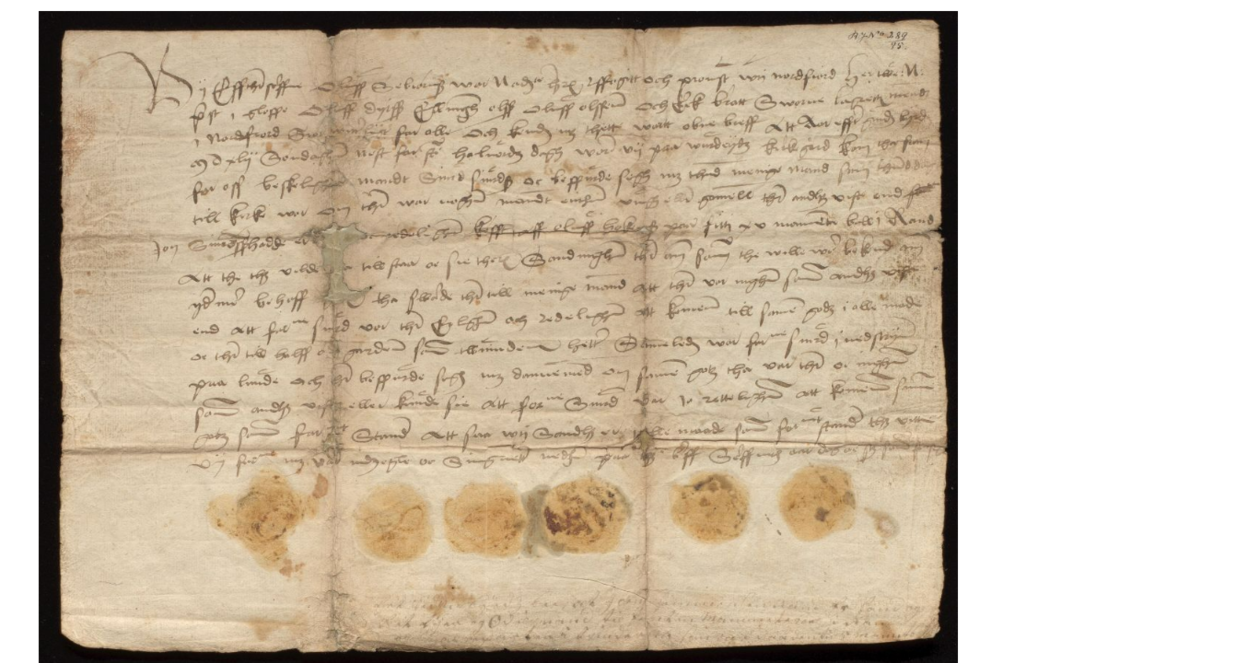
By the way, the collection and the project do not only include wax seals that hang from charters on seal straps. Already in the Middle Ages and in the period covered in the project's first phase, there are charter texts written on paper that have a seal pressed on the document itself and not an attached seal.
Further work
In collaboration with international contacts within sigillography and the studies of charter, we aim to present a TEI-standard for the coding of seal descriptions.
